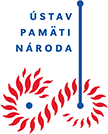November 1989 and Fall of the Communism
Communist regime in CSSR collapsed under the pressure of public in November 1989, in the atmosphere of changes in the whole Soviet Bloc. Driving force of the November events were especially Slovak and Czech students, dissidents, and artists. On November 16, 1989 approximately 300 students demonstrated for student and civil rights in Bratislava. On November 17, 1989 there was a violently crushed manifestation of students in Prague that reversed to demonstration against the communist regime. Establishment of civil movements was just a reaction to these events. In Slovakia the Public against Violence (VPN) was formed, and in Czech it was the Civic Forum (OF). In few weeks the Communist Party of Czechoslovakia (KSC) gradually lost the monopoly over its power. The constitutional embedding of “leading position of the KSC” in the society was cancelled, the censorship as well as redoubtable State Security ceased to exist, the borders were opened. The regime fell also thanks to the successful general strike. The non-communist political forces unambiguously won the first free elections of June 1990 in Slovakia.

BUDAJ JÁN
Ján Budaj is well known as a politician, freelance writer and one of the founders of the movement Public against Violence (VPN). He became famous mainly due to the mass demonstrations in Bratislava in November and December 1989, when he was an anchorman of meetings held in the SNP Square and the first man of the Velvet Revolution in Slovakia.

ČARNOGURSKÝ JÁN
A man, who actively participated in all the dissident activities of the Charter 77 movement. At the beginning of 1988, he participated in preparations for the Candle Manifestation and then, he started publishing the samizdat magazine called Bratislavské listy (Bratislava Letters). Because of his activities, the communist regime regarded him as an inconvenient person and therefore he had to face imprisonment from August to November 1989.

KŇAŽKO MILAN
Milan Kňažko, a significant personality of the Slovak cultural as well as political life. This popular actor with a negative stand towards the communist regime is well known precisely for his co-organising and hosting the mass meetings held in November 1989 in Bratislava. He was one of the founders of the Public against Violence movement (VPN), and he remained politically active also during the post-revolution era.

MIKLOŠKO FRANTIŠEK
One of the most significant personalities of the Slovak Catholic dissent and of the Slovak political stage after the year 1989, a long-time representative of the Christian Democratic Movement and a member of the Slovak National Council as well as the National Council of the Slovak Republic.

MIKLOŠKO JOZEF
He doesn’t consider himself to be a dissident, even though he actively participated in publishing samizdat magazines and various activities of the secret church. His political career began after the Velvet Revolution when he was appointed to two important posts of the Deputy Prime Minister of the Czechoslovak Federative Republic and the Slovak Ambassador in Italy. He is an older brother of František Mikloško.

SNOPKO LADISLAV
Ladislav Snopko has rubbed shoulders with the Slovak dissidents since he was a university student. In the era of the Velvet Revolution he was one of the central personalities of the Public against Violence movement and in the next years he also became an important figure of Slovak political and cultural stage.
